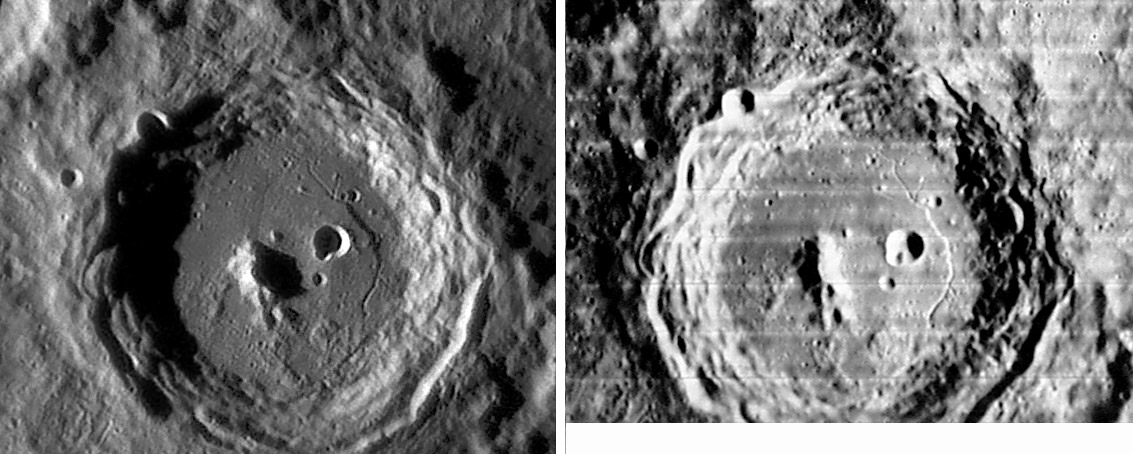
left image by Paolo R. Lazzarotti and right image from Lunar Orbiter IV 108-h2
Arzachel is famous for having an odd rille whose west side is higher than its east. Thus, at sunrise (right) it is bright and at sunset (left) it casts a shadow. Rilles are usually formed by horizontal extension - the crust is pulled apart, but in this case there must also have been relative vertical movement. Both the Lunar Orbiter IV image and Paolo’s one from 250,000 km further away also show a delicate rille due north of the central peak. If this narrow rille also formed by extension the only way these two facing rilles could both extend is if the area between them domed up. And that would be consistent with the higher west side of the larger rille. A straight fault near the bottom right side of the floor also indicates that the center moved up relative to the nearby wall. I have commented before on the smooth patch to the west of the central peak. It is little-cratered and this seems younger - perhaps it is a patch of volcanic material that erupted onto the floor. Uplift, rilles, and lava are all characteristics of floor-fractured craters - and that is what Arzachel is.
Technical Details:
25 September 2005. Gladio 315 Lazzarotti telescope (f/25), Lumenera Infinity 2-1M camera, Edmund Optics G filter IR blocked, 50-90 frames stack out of 1500. Here is the entire image.
Related Links:
Rükl plate 55
Paolo’s website
Stephen Keene’s Arzachel
You can support LPOD when you buy ANY book from Amazon thru LPOD!
COMMENTS?
Click on this icon File:PostIcon.jpg at the upper right to post a comment.



